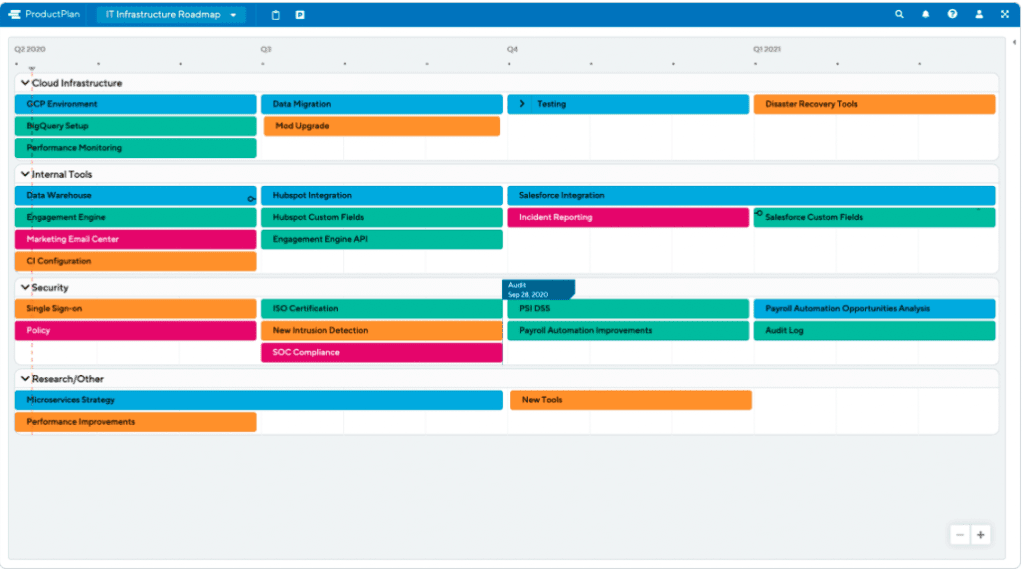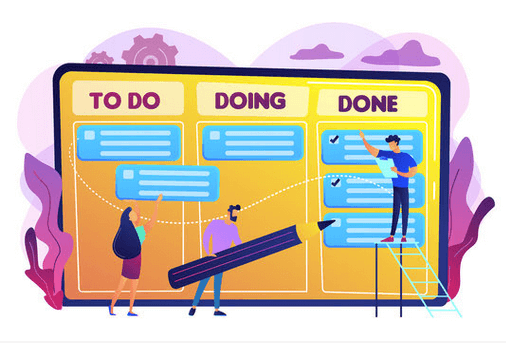Regardless of whether you’re building products for software, hardware, or services, product managers of every stripe are considered the driver of a product’s strategic development and the single source of truth for questions, requests, and feedback related to their products. The role of software vs. hardware product managers varies from other industry roles, though many similarities exist.
PMs set the long-term vision and strategy for a company’s products and communicate this strategy to all relevant participants and stakeholders. Moreover, PMs must build consensus, break down silos, and win over stakeholders to develop their products. Engaging with customers is firmly rooted at the core–whether the product is physical or digital.
But roads diverge as we travel down the different paths of product management for software, hardware, and services. In this post, we’ll explore unique aspects of each role and where they intersect.
What is software product management?
Software product management involves “building, implementing, and managing software or digital products, taking into account life cycle considerations and an audience.”
Software product management usually entails shorter product dev cycles, more flexible product definition and testing, and lower financial risk. It’s easier to roll back a decision or make changes during development.
With software, speed is key: there is a quick-paced cadence to iterate fast, ship fast, and build on user feedback. Software PMs are able to manage the scope of the product. They achieve this by breaking it down into smaller parts. Because of this, software products and features updates tend to be easier to roll out faster than their hardware counterparts.
Software pms naturally lean into concepts like continuous delivery and continuous deployment.
Continuous delivery refers to a software organization’s ability to quickly and easily push product updates like new features, bug fixes, or new UI designs to end users. Clearly defined processes and protocols enable product teams to push code live at a moment’s notice.
Continuous deployment refers to a software organization’s effort to reduce the amount of time between writing code and pushing it live.
Both concepts open the door for accessing valuable customer feedback, which software PMs can then feed back into the development loop to improve the product and user experience.
The role of digital product managers
Digital PMs are responsible for digital products (e.g., software tools, apps, or any product developed and used electronically). In addition to the same core skills required of all successful PMs, digital PMs need a special subset of skills to effectively manage digital products. Here are a few examples:
- Rapid iteration and deployment: Agile principles enable digital PMs to deliver working products to end users frequently. The ability to rank small updates is important to push updates more frequently.
- Design thinking: User experience is key for a digital product, and therefore, listening to user feedback is a critical part of a digital PMs work. Building that feedback into product updates helps to create a smooth, intuitive user experience.
- Understanding usage data: Digital PMs have access to incredible insight about how users actually use the product. By tracking usage, digital PMs can better understand what’s working well, and, more importantly, what needs improvement.
The role of IoT product managers
IoT (Internet of Things) product managers drive the business strategy and development of products connected to the internet. Some common examples include smart appliances, wearable health devices like FitBit and iWatch, and smart security products like the Ring doorbell.
IoT PMs are responsible for many moving parts, which require alignment and partnership with hardware PMs, software PMs, and cloud platform/apps teams.
In search of a software product manager
Here’s an example from a recent job listing for a software product manager:
As a Software Product Manager you will act as a conduit between users and our engineering team. You’ll work with users to understand their needs and desires, and you’ll have the technical skills to work with engineers to deliver those requirements. The output of your work is a commercial product that enterprise users love and value.
As a PM you’ll explore and develop product ideas, whether interviewing customers, looking at competitors, or investigating open-source technologies. Moreover, there are many great ideas, but only some can be developed, so you’ll collaborate with UX, engineering, and leadership to prioritize the best for product development.
The heart of a PM’s job is to translate user requirements into executable work items that the development team can implement in the product. You will have the detailed technical knowledge necessary so you can explain feature requirements to developers and work with them to deliver these improvements for users.
This role is suitable for someone who enjoys working with users, technology, and delivering software products that users love. You’ll need to be comfortable in a fast-paced environment, able to work at both a user and technical level, and have a strong focus on outcomes.
What is hardware product management?
Hardware product managers deal with, you guessed it, a physical product. Because of this, it’s much harder (and costly) to pivot during the development process or roll back changes. The hardware development process also tends to be more complex, which means it runs on a longer dev cycle than software or services. Consider, for example, how frequently a new iPhone version is released compared to updates to the software run on an iPhone.
Hardware product management usually has a fixed product definition and more rigid requirements. Some team’s plan releases years in advance. And once production begins, making any changes can be expensive, if not completely impossible.
“The hardware product manager needs to define and finalize requirements of the product before any development begins,” writes Laide O. of the Penchange for Product. “With hardware product management, there is no A/B testing. Therefore, the product manager needs to ensure that the product is fully functional when launched.”
Because hardware often also involves a software component, hardware product management must be a well-choreographed dance between hardware and software teams.
To gain insights into the user experience, hardware PMs must engage with customers and prospects by conducting interviews and creating channels for feedback. Hardware PMs don’t have the same advantage as their software PM counterparts to track product usage.
In search of a hardware product manager
Here’s an example from a recent job listing for a hardware product manager:
Company X is searching for a Hardware Product Manager to work closely with the business executive team and Software Product Development stakeholders to translate our shared vision into execution that enables the organization to reach its product development goals, increase productivity, realize efficiencies and maximize user value.
Company X offers a line of IoT hardware devices that enable our customers to automate the collection of telemetry data, and you will be the owner of this exciting product line.
As a Hardware Product Manager, you will engage with business and engineering teams to plan, investigate and launch improvement initiatives and product releases. You will leverage your exceptional organizational and communication skills to balance workloads and expectations, while also using your analytical chops to synthesize product usage trends and identify opportunities to improve the users’ experience.
What is service product management?
Service product management deals with managing a service product across its complete life cycle.
“A service product, unlike a hardware or software product, is intangible and manifests itself as pure professional services or as a combination of services with necessary software and/or hardware. Service product managers are focused on reducing friction, improving the customer experience, and strengthening the relationship.”
Service PMs dig deep into customer research and identify opportunities to optimize the user experience.
Understanding the difference between software and hardware product management
All product managers are tasked with setting their products’ long-term vision and strategy. They communicate this strategy to stakeholders, listen to and understand customers, align with business goals, and execute a successful product launch.
The Penchant for Product blog defines the main goal of any product manager as this: to ship experiences that delight customers and deliver business outcomes.
“Software product management is similar to hardware product management in terms of the expected outcome. However, the process with which the goal is executed is where the differences lie in,” writes Laide O. of the Penchange for Product.
Another striking difference between software and hardware product management is a product’s release cycle. The former is fast and frequent. The latter is slow and rigidly defined.
“In both hardware and software product management, mistakes are bound to happen,” writes Richard Chen on the Product Gym blog. “The biggest difference between the two is the cost of those mistakes. Unfortunately, your mistakes as a hardware product manager are going to be much more expensive than mistakes made as a software product manager.”
Though hardware, software, and service PMs may have distinct approaches to product development, the products they’re building often require partnership and alignment. For many products today, hardware, software, and services are interdependent for product success and for creating user experiences that delight. Understanding the idiosyncrasies of each role can help strengthen these strategic relationships.
At the end of the day, the user experience unites all product managers. On the Just a (Hardware) Dude blog, Andrew J. Dupree writes, “Any high-potential hardware product should include a good software experience, and many great hardware companies are Hardware-as-a-Service.”
What do product roadmaps do for product management?
All product managers must effectively develop, organize, and communicate product strategy. Roadmaps are an effective way to accomplish this.
A product roadmap has several goals:
- Describe the vision and strategy
- Provide a guiding document for executing the strategy
- Get internal stakeholders in alignment
- Facilitate discussion of options and scenario planning
- Help communicate with external stakeholders, including customers
Launch management for product managers of every stripe
A product launch significantly influences a product’s ultimate success or failure in the marketplace. Moreover, a launch can accelerate trial and adoption. Moreover, it can generate product buzz and claim a position in a competitive landscape. When done poorly, however, a launch can damage an organization’s reputation or a product’s potential.
Lastly, product managers strive to deliver a great launch that leaves a memorable impression.



